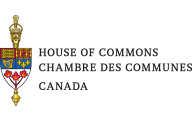Defending my identity
Over the past couple of years, I have been more assertive in defending my identity.
I am proudly a Jew (in case you didn’t already know). I have never hidden that fact. In university, I refused to write exams scheduled on Jewish holy days or on the Jewish Sabbath (Friday evenings and Saturdays). On my first day of work at Bell-Northern Research in early September in the late 80’s, I informed my boss that I would be missing work in a few weeks for the High Holy Days of Rosh Hashana and Yom Kippur. He responded that I wouldn’t have earned any vacation time by then. I made it clear that I wasn’t asking for time off. I wasn’t going to be at work those days; he and HR could figure out how to code it.
In the early 90’s, the CRTC was running behind schedule during a multi-week hearing. The Commission wanted to have sessions on Saturdays in order to catch up. I refused to testify on a Saturday. My boss pressured me, reminding me that I wasn’t “that” religious. I replied saying it is one thing for me to choose to do some work on Saturdays, but it is a different matter for my government to require me to work on my Sabbath. I held firm. Instead, the hearing ran later each day. An observant Jewish member of one of our competitors came up to me and thanked me for holding my ground.
And, that is why I am using this platform to write this post.
When I am publicly defending my identity, I am also standing up for those who don’t have a public persona. I get to raise my voice on social media, and often, some like-minded followers will amplify that message well beyond my customary reach. It is a network benefit.
Back when the Laith Marouf affair was percolating, the story gained traction when Jonathan Kay raised the profile of my complaints. It is for that reason that I believe it is important to write to you.
Followers of this website know that I frequently travel to Israel. Israel is an intrinsic part of my Jewish identity. When Jews pray, we face toward Jerusalem. Our prayers and our bible contain references to Israel. Major Jewish festivals are tied to agrarian timetables and practices in Israel. I am not an Israeli citizen, but I have family who are.
The events of October 7, 2023 have been deeply troubling to me. The response – or more correctly, the lack of moral leadership – by Canadian officials has been disturbing. The sacking of British Columbia’s NDP cabinet member Selina Robinson demonstrates a pervasive rot – or latent antisemitism – among many political leaders.
I am tired of politicians thinking that the way to respond to antisemitic acts is to write on Twitter that “This is not who we are” or claim that “Hatred and violence against Jewish communities have no place in Canada.”. Condemnations on social media are no match for intimidation by throngs calling “Death to the Jews”. Tweets are ineffective against firebombings and shots fired at synagogues and Jewish community centres.
In defending freedom of expression, I have frequently quoted Aaron Sorkin’s brilliant speech from The American President. “You want free speech? Let’s see you acknowledge a man whose words make your blood boil, who’s standing center stage and advocating at the top of his lungs that which you would spend a lifetime opposing at the top of yours.”
Still, there are limits to those speech rights. As CIJA said in its statement yesterday, “We cannot allow mob-driven demonstrations to obstruct our right to participate fully in society.”
Which brings me to how you fit in to help in defending my identity. In resigning from the NDP caucus, Ms. Robinson wrote, “I don’t need your hugs and your emojis. What my community needs however, is for you to stand up to antisemitism.”
Call out hate when you see it online. Tell your elected officials that antisemitism isn’t just a problem for Canada’s Jews. Demand action.
And every once in a while, I’d be OK with a hug.

 Parliamentarians on the Standing Committee on Industry and Technology (INDU) have mustered faux outrage in their undertaking of a study on
Parliamentarians on the Standing Committee on Industry and Technology (INDU) have mustered faux outrage in their undertaking of a study on 